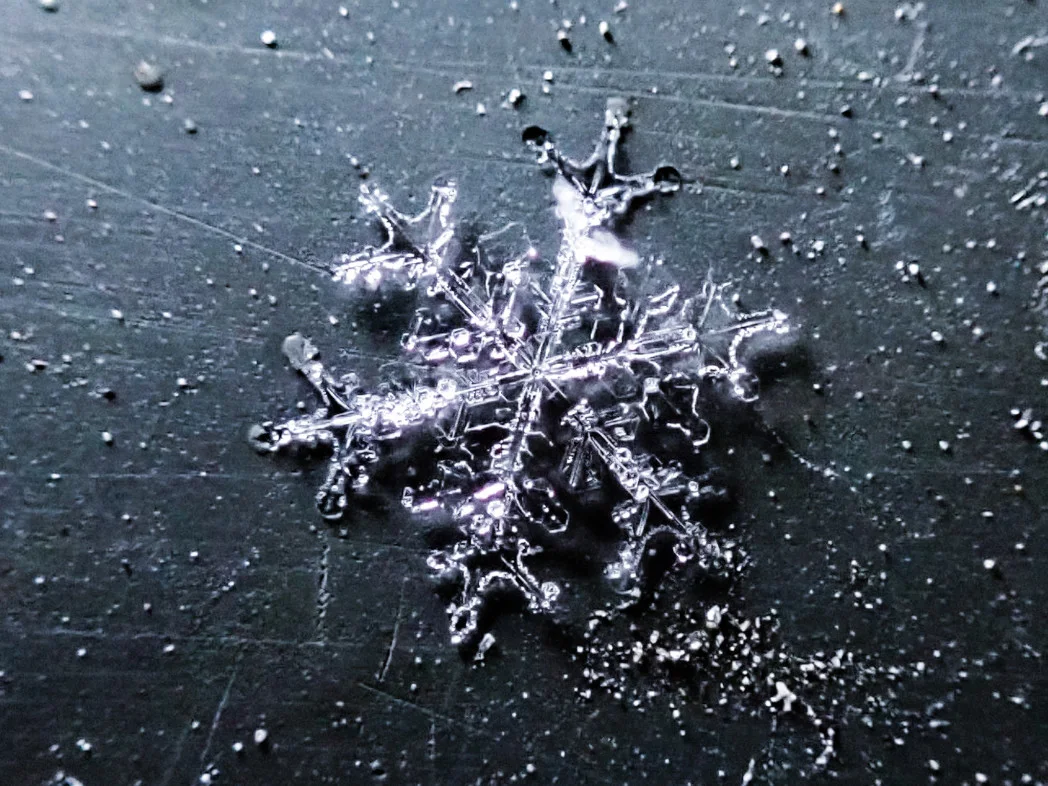
Macro photography reveals remarkable complexities of snowflake structures
As cold and snowy weather descends upon parts of Canada, these delicate little treasures have been transforming our surroundings into a picturesque winter wonderland. Among all types of snow crystals, these classic-looking snowflakes - known as “stellar dendrites” - are probably the most well-known, and require a fairly particular set of atmospheric conditions for their formation.
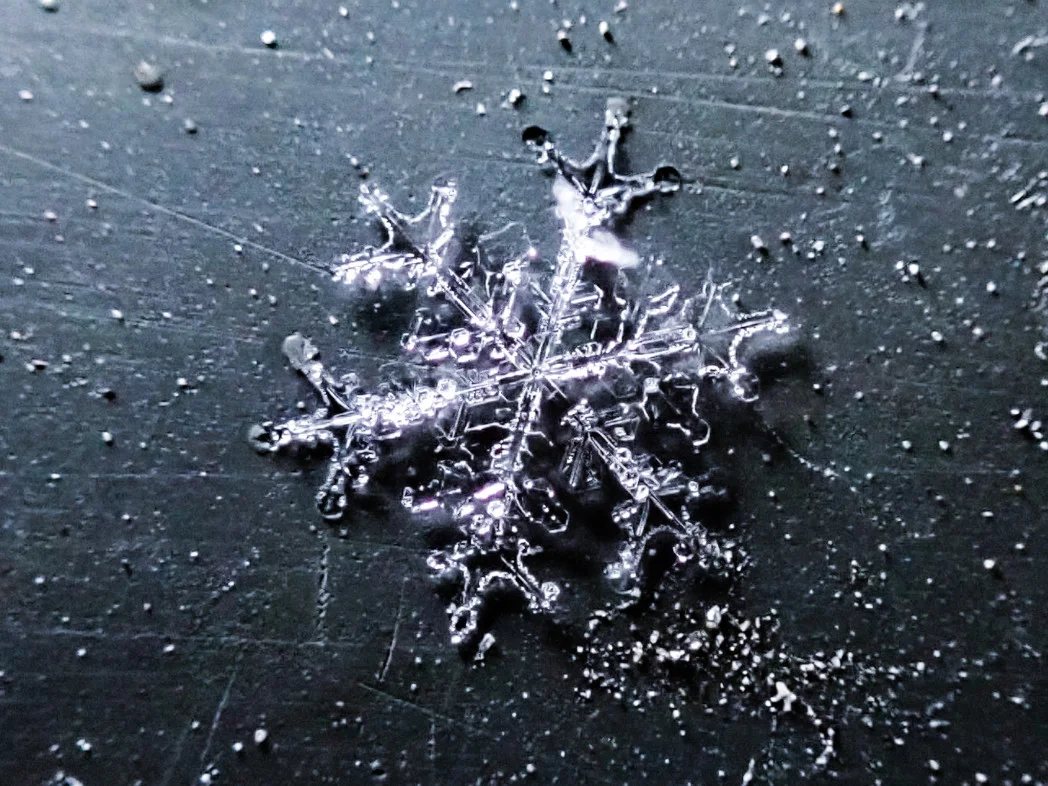
Courtesy of Kyle Brittain
All snowflakes initially begin as hexagonal, plate-shaped ice crystals, whose six-sided shapes mimic the internal molecular structure of water molecules as bonding occurs in low temperatures. Depending on the temperature and relative humidity of snow-bearing clouds, these snow crystals will form in different ways. When temperatures of -12C to -18C exist within the clouds, dendrites are the favoured type of snow crystal, which are the most elaborate-looking flakes, and can be up to 5 mm across.
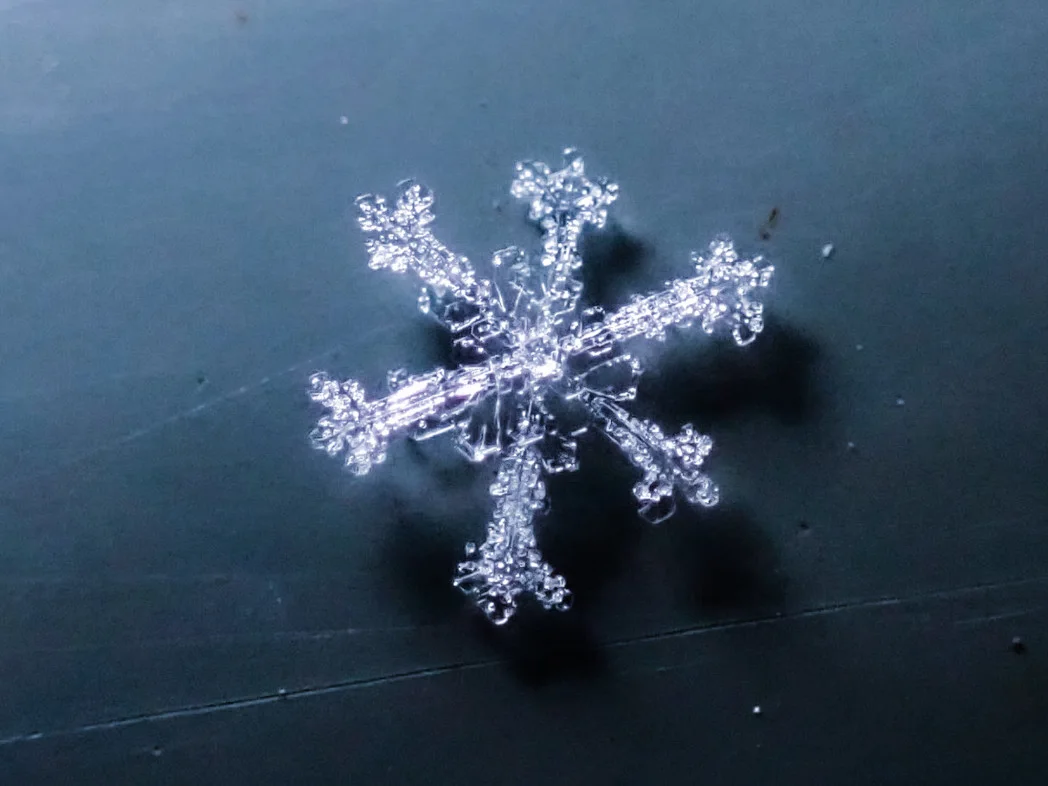
Courtesy of Kyle Brittain
Stellar dendrites are named so due to their “star-like” appearance, which consist of elaborate branches that form in a way that often look truly symmetrical.
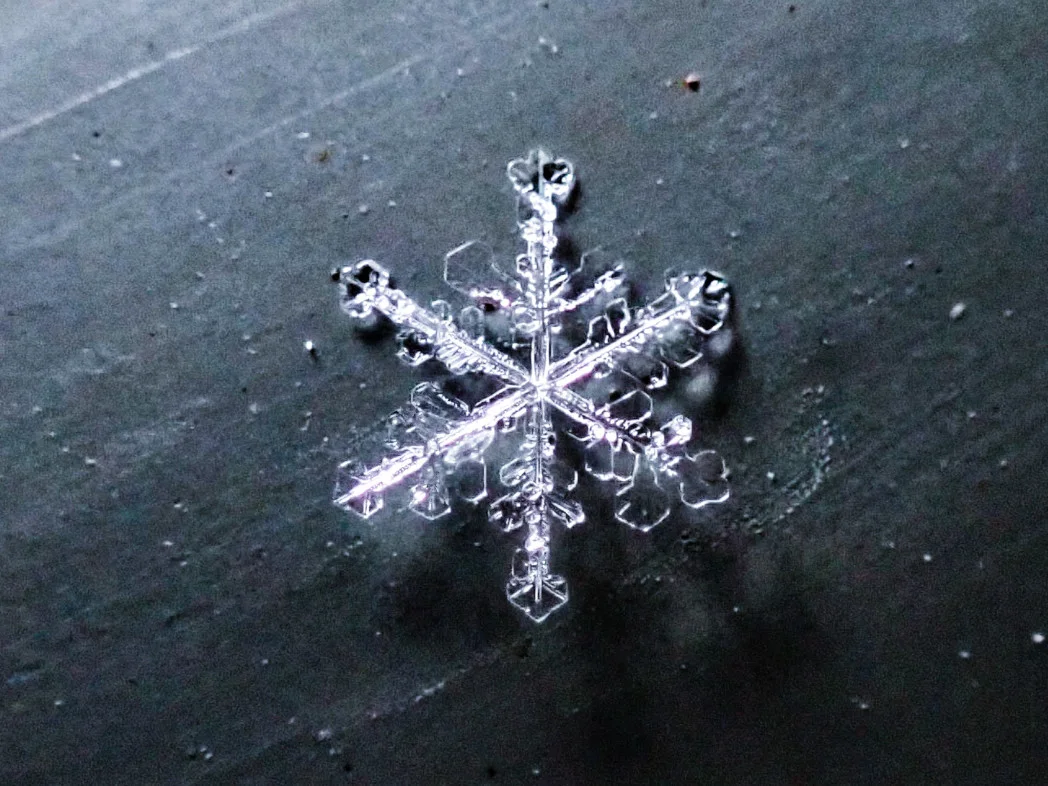
Courtesy of Kyle Brittain
No two snowflakes are alike however, and indeed, not even individual snowflakes are truly symmetrical upon close inspection. Snow crystals take endlessly different paths through clouds as they rise and fall, through subtle variabilities in temperature and relative humidity.
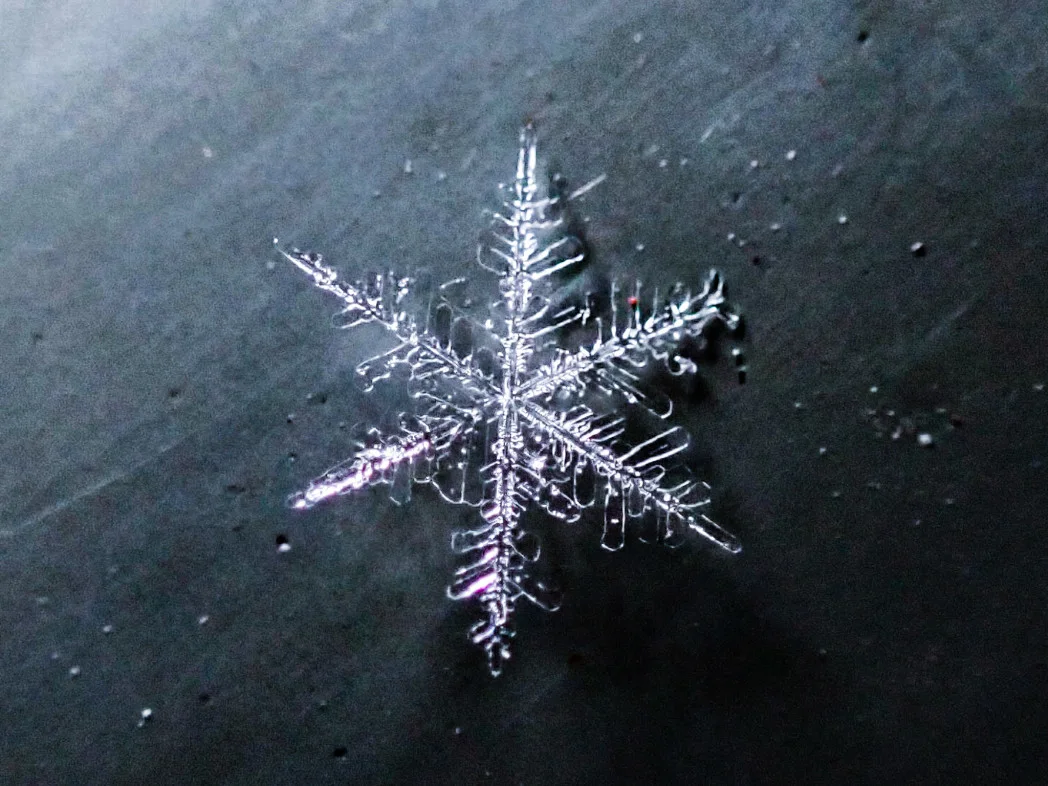
Courtesy of Kyle Brittain
Snow crystals may clump together as larger snowflakes as they descend, or they may fall as individual crystals that are more easily observed on the ground. The optimal conditions for observing snowflakes seem to be during cold conditions with light winds, and with relatively light snowfall rates. Then, all that is needed is a dark surface, and some kind of a magnifying glass to truly enjoy them.
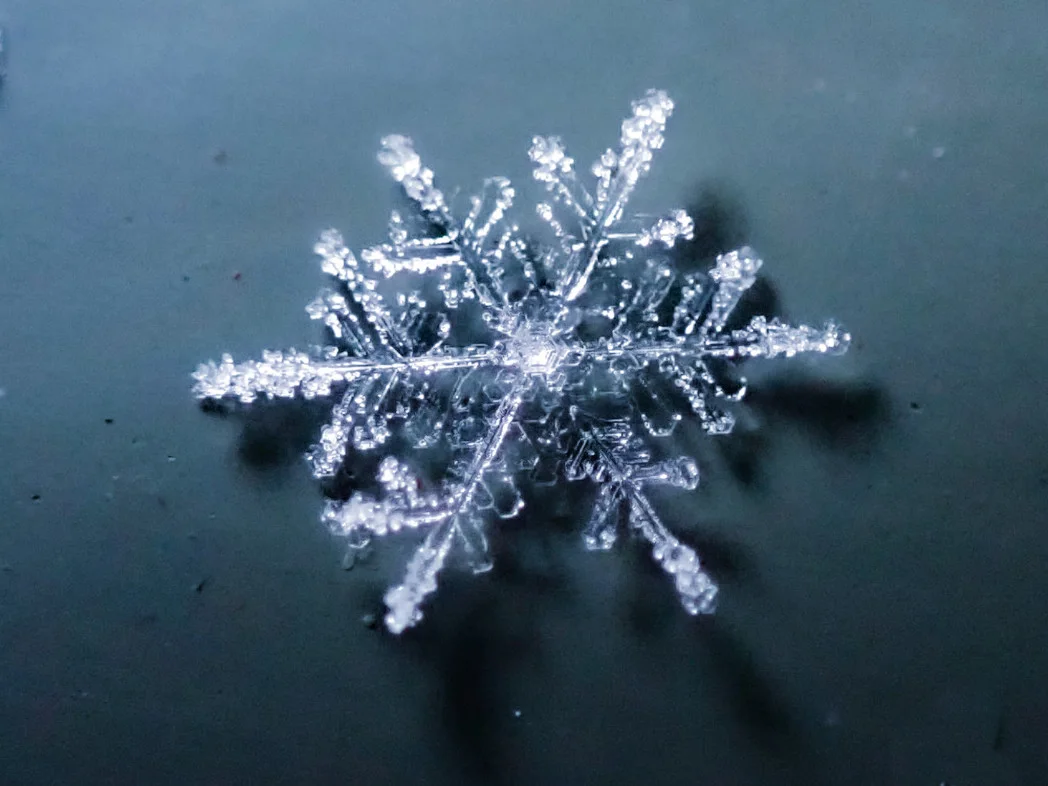
Courtesy of Kyle Brittain





